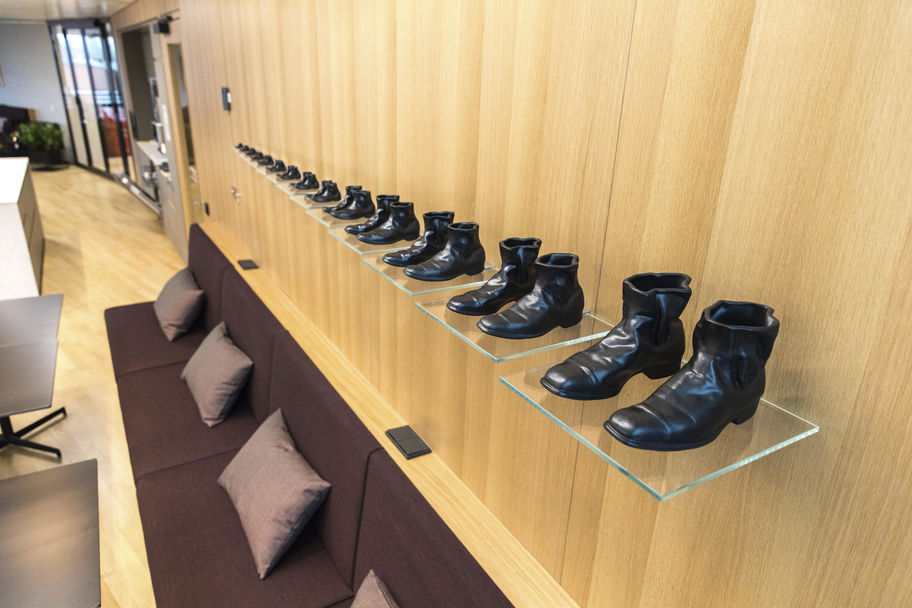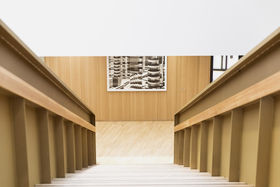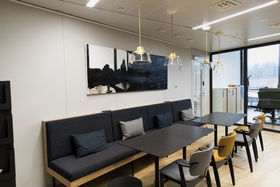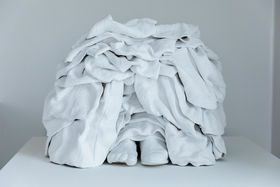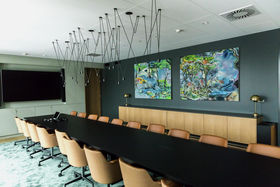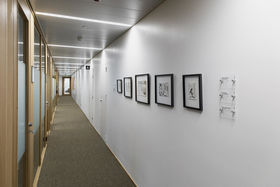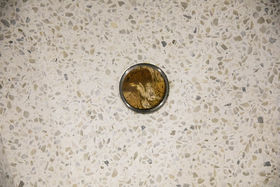Radical Nature
Human Approach
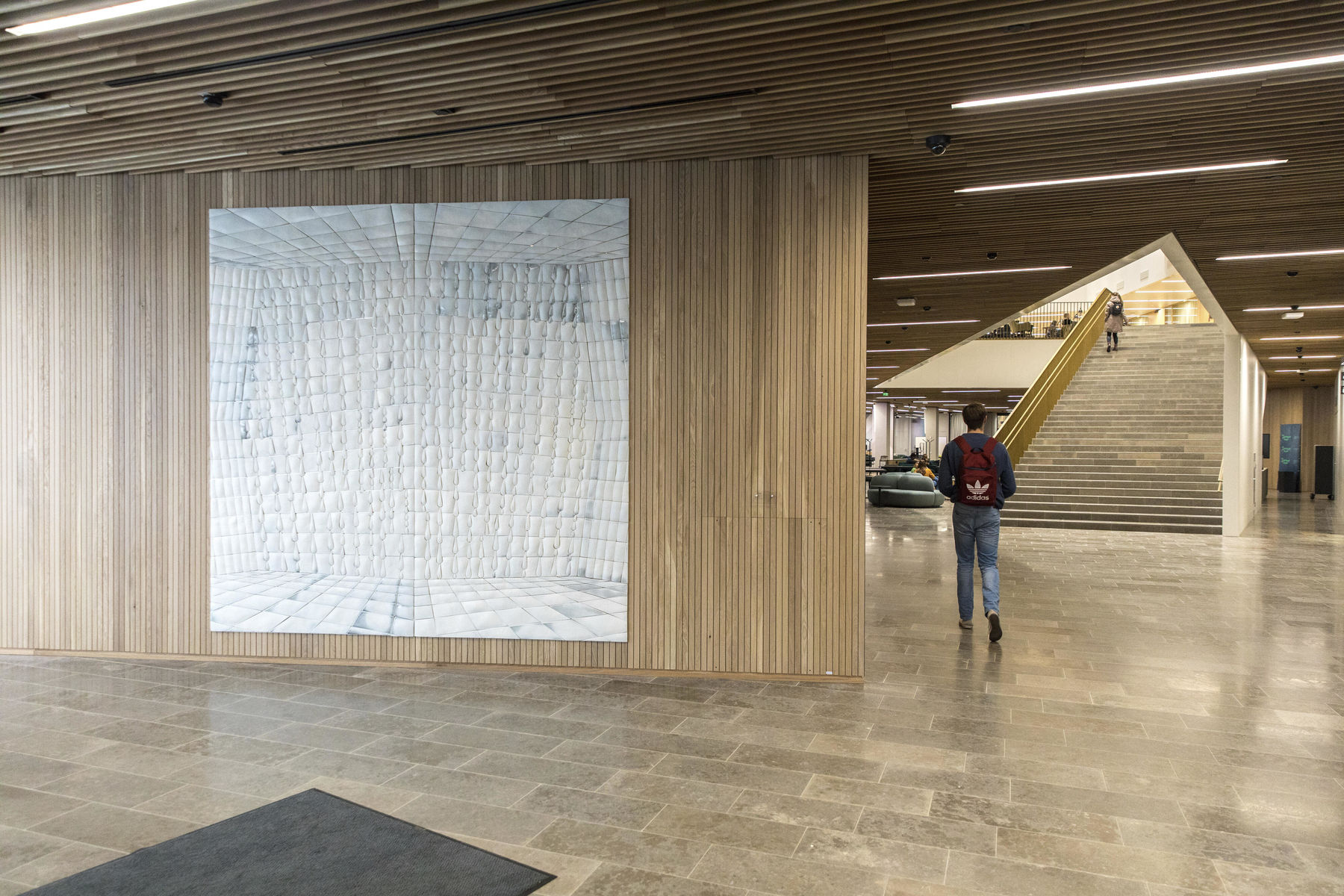
The art concept Human Approach respects the past, still keeping an eye on the future. Public art at the School of Business aims to create an inclusive and dialogical experience and to create an open and low hierarchy working and learning environment.
‘Art can induce us to freely explore the world beyond fixed meanings or conceptions. In doing so, art can also create friction. Here at Aalto University, we believe that only through such collisions of different viewpoints, disciplines and knowledge communities can we create something new: the not-yet-known future,’ says Anna Valtonen, Vice President of Arts and Creative Practices of Aalto University.
‘For me the art concept Human Approach means being aware of other people. It’s a question of being a part of community, not so much a question of someone’s individual goals,’ says Kirsi Kivivirta, artist of the main piece of the Human Approach collection.
With harmonious colours that respect the architecture, STAGE welcomes everyone who enters the new building. The choice of ceramic as the material for an entrance artwork also respects the history of the former School of Business main building. STAGE creates an imaginary scene, a flexible frame for meetings and activities.
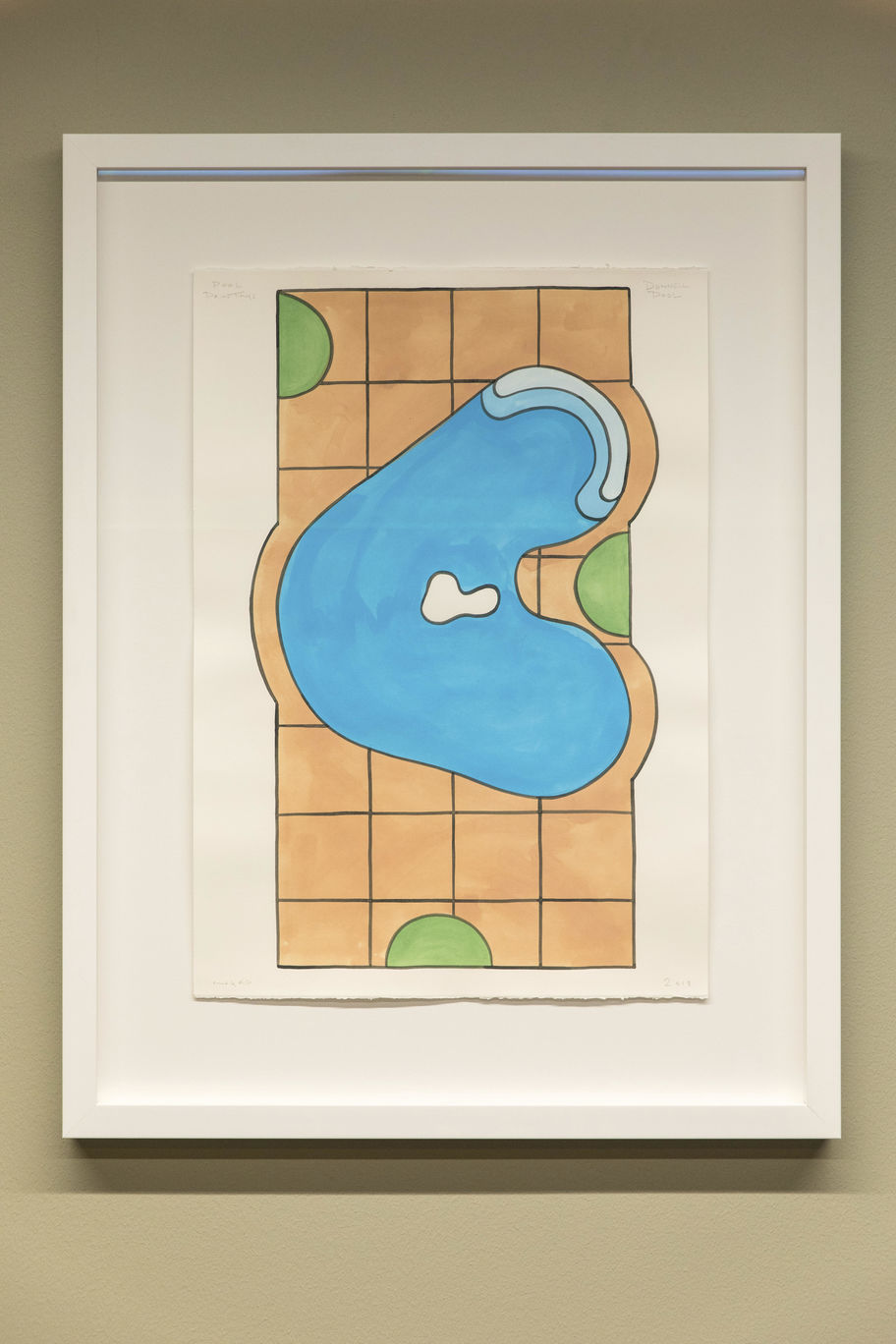
THE VALUE OF ART
The Aalto University School of Business educates experts and leaders for the future, who work to create better businesses and a better society. The new premises for the School of Business and the art concept of Human Approach invite us to flex our imagination when we think about the future of education and research, business and life. Behind each of these activities, there is a human approach: an aim to achieve, a wish to fulfil, a question to answer. I hope the many artworks here will remind us of the myriad approaches and achievements of the school. In addition to respecting the past, may art in the new building also chal- lenge us to re-imagine the future of business and, indeed, life.
Art is an intrinsic part of our built environment at Aalto University. We encounter and experience art in diverse locations including indoor and outdoor public spaces, but also in more private spaces such as offices and meeting rooms. By committing resources to art and creating the public art program, Aalto University wishes to highlight the importance of looking at the world through diverse perspectives and viewpoints. Art can induce us to freely explore the world beyond fixed meanings or conceptions. In doing so, art can also create friction. Here at Aalto University, we believe that only through such collisions of different viewpoints, disciplines and knowledge communities can we create something new: the not-yet-known future.
Anna Valtonen, Professor, Aalto University
THE HUMAN APPROACH ART CONCEPT
All art is connected by a human approach, and from this perspective the theme for the art concept is a universal one. Still, after a second glance into the theme and the individual works of art, several layers of mean- ings can be found. Taking a second look is the key element in experiencing art, as art is intended not only to entertain. Rather, the art works at the new premises of Aalto University Business School are here to bring well-being to everyday work; to be examined, interpreted and even critically debated.
The Human Approach art collection consists of “STAGE”, a site-specific art instal- lation by artist Kirsi Kivivirta, and new purchases from Aalto University alumni and international artists. The art collection focuses on paintings and thus honours existing works at the School of Business. The collection also features phenomenal works of art from a recent donation by the Paulo Foundation. Naturally, it complements and is complemented by the wonderful existing art collection, whichis already familiar to the students and faculty members of the Business School.
With the Human Approach theme, the art collection focuses on the idea of hu- man interactions, which are the cornerstone of all activities at the Business School. But how is this visible in the selected artworks? Each work chosen represents a human activity, yet humans are not at the centre of the art itself. The Human Approach art collection presents paintings of empty spaces without visible human beings, still it is clear that behind every stage, every pool, every building and every shoe, there is a human touch. The art collection invites you to take a moment from your work or study day to appreciate the spaces and works created by humans for human benefit.
Outi Turpeinen, Senior Specialist, Aalto University
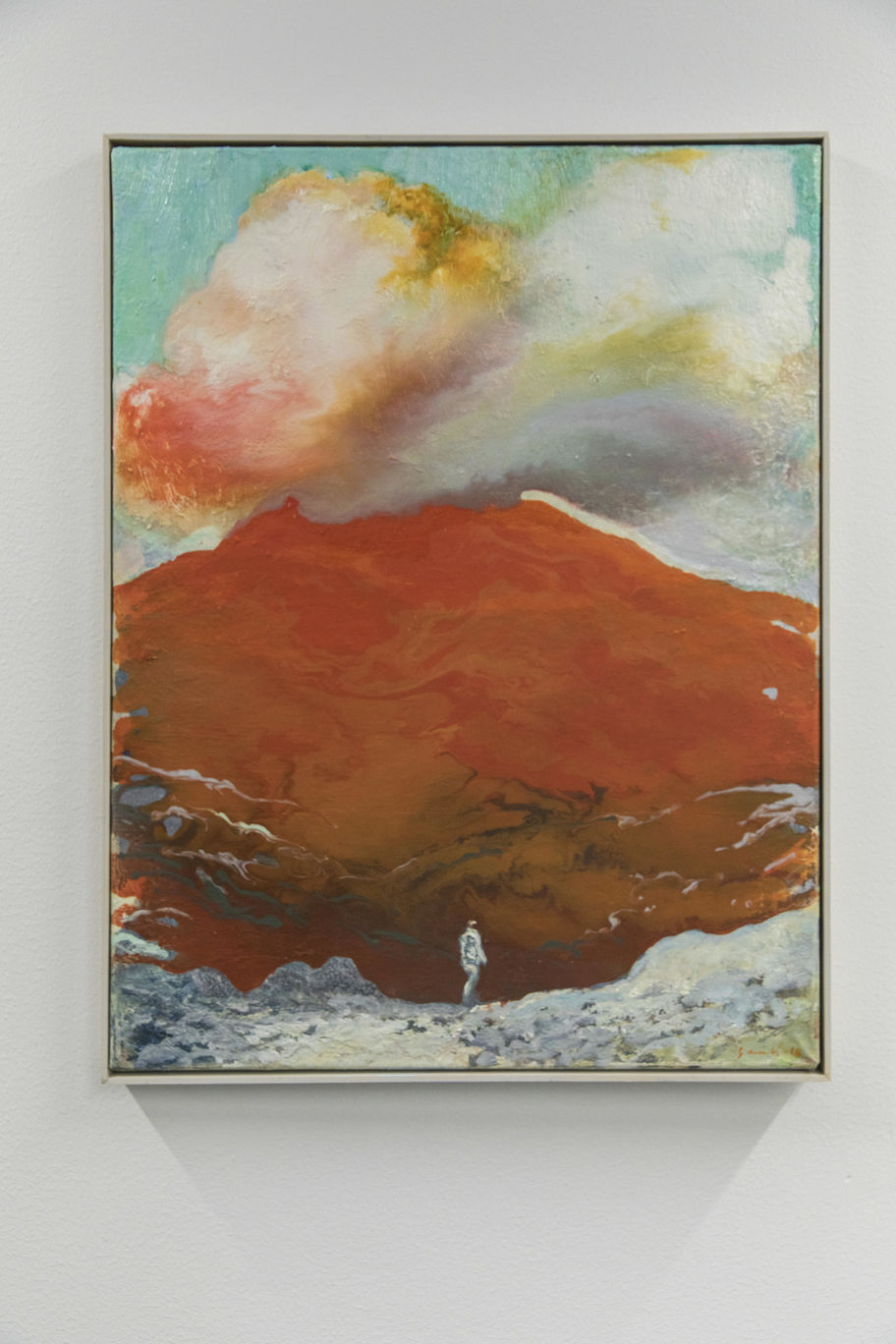
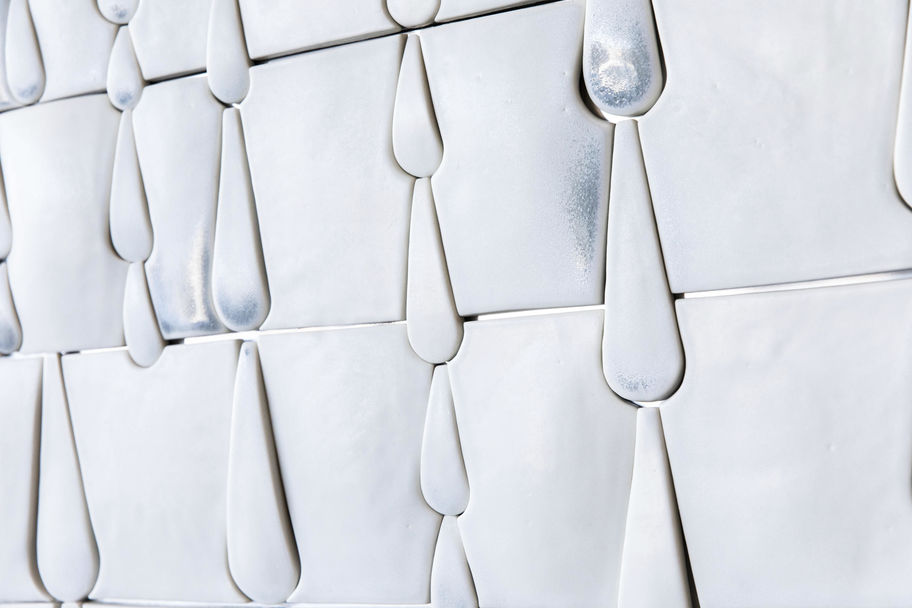
KIRSI KIVIVIRTA "STAGE" 2019
"The core of the Human Approach art concept is consideration of other people. It's about being a part of the community, not so much about the individual's own goals," says artist Kirsi Kivivirta, creator of the main work of the School of Business building.
With harmonious colours that represent the architecture, STAGE welcomes everyone who enters the School of Business building. The colour harmony of STAGE respects the architecture of the building and reflects the ceramic facade relief of the former main building of the School of Business. The atmosphere of the work is typical of a stage, as it describes a place that provides a framework for the meeting and action of people and ideas.
IC-98 "Mare Tranquillitatis", 2020
I. Life on Earth
II. Energy and Death
III. Gold and Tranquillity
Artist duo IC-98's, Patrik Söderlund and Visa Suonpää, piece Mare Tranquillitatis transforms staircases into zones of perfect tranquility, to act as places to unwind and to be present.
There are clock capsules with mineral samples are sunk into the concrete, mosaic patterned staircases of the School of Business building. The capsules remind us of our intrinsic connections to billions of years of continuum and challenge us to ponder our responsibility for our lives and the material base on which we have built our civilisation and its institutions.
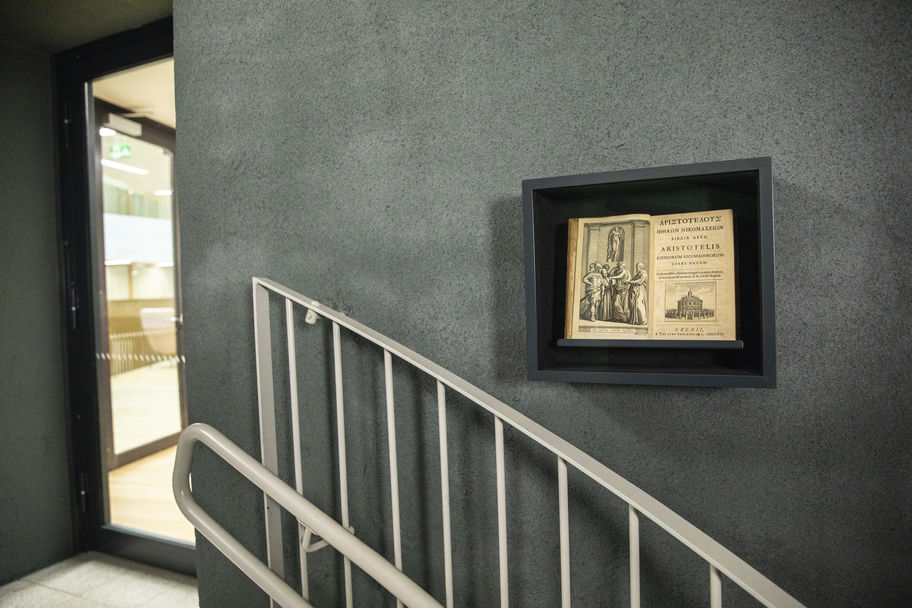
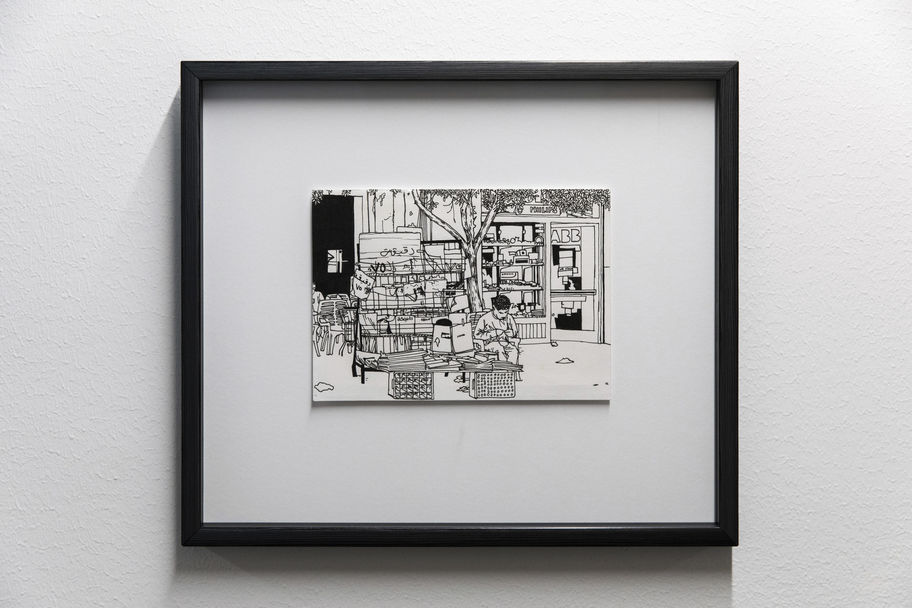
SOME WORDS ON THE HUMAN APPROACH COLLECTION
The word business comes from the old English bisignes, which in 14th century northern England and south-east Scotland meant the mixture of care, anxiety, and sense of being occupied that was attached to one’s job or work. Today, the word business refers to a much wider set of ideas, practices and inclinations in society related to commerce, trade, entrepreneurship, and consumption in a general economic environment.
But, as its etymology indicates, the elements of care, anxiety, and occupation are central to its humanness as a concept. In practice, not all business cares, is anxious or is occupied with its relations, consequences and effects on the world. However, this coalescing of concern, attention and pursuit is still what forms what we consider to be the human factor in both art and business. It is this factor that the Human Approach art collection located in the new School of Business building alludes to through the various projects, drawings, paintings and sculptures on display.
In our tech-driven world of apps, al- gorithmic trading, and increasing automation, what does it mean to place a spotlight on the human? In Human Approach we find an ar- ray of reflections—some direct, others indirect and more abstract—on this question. From Pilvi Takala’s embodiment of start-up culture to Anu Kauhaniemi’s depiction of that all too contemporary place for business, the café. From GRRR’s (Ingo Giezendanner’s) humble yet complex ink drawings of informal street economies to Kirsi Kivivirta’s intricate stage that seduces visitors to exchange knowledge and experiences with one another. The Human Approach collection aims to echo the ambitions of Aalto University in which business and art find ways to enrich their encounters with the world in a joint mission.
Bassam El Baroni, Assistant Professor in Curating and Mediating Art
ART IS ESSENTIAL FOR OUR IDENTITY AS THE AALTO COMMUNITY
The Human Approach highlights the importance of art as a dynamic, critical and creative force. Art not only adds aesthetic val- ue to our lives and work environments, it also brings us together and invites us to unite in an open and inclusive scholarly community.
Art encourages us to be creative: to generate and produce novel ideas that are useful and valuable for humankind. Art in- spires us to think differently and explore new, even radical perspectives in interaction with others. As a social practice, art builds on tra- dition, rules, and skills, but it also challeng- es rules and conventions. Pilvi Takala’s video works, for example, make us aware of the implicit rules of social communities and human interaction, challenging us to re-think—perhaps also to problematise things we take for granted, and to move beyond existing horizons of knowledge and practice.
I hope that the Human Approach to displaying public artwork in the new Aalto School of Business building thus continuously reminds us that at Aalto University, art is one of the cornerstones of a thriving multidis-ciplinary research community. Art is essential for our identity as members of this community, and it is essential for what it means to be a human being.
Johanna Moisander, Professor of Organizational Communication
